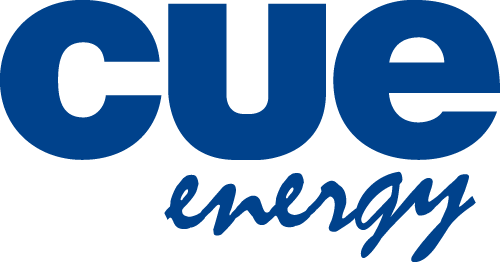Reserves and Resources
As at June 30, 2024 Cue has reported 4.6 million barrels of oil equivalent (mmboe) of proven (1P) reserves and 6.3 mmboe of Proven and Probable (2P) reserves. 68% of reported 2P reserves are gas and 32% are oil.
Cue’s 2P reserve replacement ratio for FY2024 is 112%, taking into account reserves additions and production during the year


Oil and gas reserves, are reported as at 1 July 2024 and follow the SPE PRMS Guidelines (2018).
This resources statement is approved by, based on, and fairly represents information and supporting documentation prepared by Echelon General Manager Assets & Engineering Daniel Leeman. Daniel is a Chartered Engineer with Engineering New Zealand and holds Masters’ degrees in Petroleum and Mechanical Engineering as well as a Diploma in Business Management and has over 15 years of experience. Daniel is also an active professional member of the Society of Petroleum Engineers. Echelon reviews reserves holdings twice a year by reviewing data supplied from the field operator and comparing assessments with this and other information supplied at scheduled Operating and Technical Committee Meetings.
Daniel is currently an employee of Echelon Resources Limited whom, at the time of this report, are a related party to Cue Energy. Daniel has been retained under a services contract by Cue Energy Resources Ltd (Cue) to prepare an independent report on the current status of the entity’s reserves. Echelon has been a shareholder in Cue since 17th Jan 2017 and as at 30 June 2024, Echelon had a 50.03% equity holding in Cue.
Cue currently holds an equity position of 5%, 11.25% and 15% in the Maari, Mahato and Sampang assets respectively, though Production Sharing Contract adjustments at the Mahato and Sampang fields affect the net equity differently across the various reserve categories.
In the Amadeus basin, Cue currently holds 7.5% equity in the Mereenie field and 15% equity in each of the Dingo and Palm Valley fields.
For undeveloped reserves, the following project maturity sub-classes are assumed- at Mahato PSC, UndevelopedApproved for Development, at Sampang PSC- Justified for Development, at Maari- Justified for Development, at Mereenie and Dingo- Justified for Development.
For Sampang PSC Contingent Resources, as the developments are not yet sanctioned, the economics and royalties are not yet known, therefore an assumed net effective equity is used of 15% for Paus Biru and 8.18% for Jeruk.
Estimates are based on all available production data, the results of well intervention campaigns, seismic data, analytical and numerical analysis methods, sets of deterministic reservoir simulation models provided by the field operators (OMV, Texcal, Medco and Central Petroleum), and analytical and numerical analyses. Forecasts are based on deterministic methods.
For the conversion to equivalent units, standard industry factors have been used of 6Bcf to 1mmboe, 1Bcf to 1.05PJ, 1 tonne of LPG to 8.15 boe and 1TJ of gas to 163.4 boe.
Net reserves are net of equity portion, royalties, taxes and fuel and flare (as applicable).
All reserves and resources reported refer to hydrocarbon volumes post-processing and immediately prior to point of
sale. The volumes refer to standard conditions, defined as 14.7psia and 60°F.
The extraction methods are as follows; for Maari oil is produced to the FPSO Raroa and directly exported to international oil markets, at Mahato, it is via EPF facilities which includes an oil and water separation system, with the oil then piped 6km to the CPI operated Petapahan Gathering Station, at Sampang, gas is gathering from the Wortel and Oyong fields and piped to shore where it is sold into the Grati power station, at the Mereenie and Palm Valley gas fields gas is gathered from the wells and ultimately collated into the Amadeus Gas Pipeline where sales vary to different customers within the region and further afield and at Dingo, gas is sold into Alice Springs and the Owen Springs power plant.
Tables combining reserves have been done arithmetically and some differences may be present due to rounding.
For the 2P change of reserves year-on-year, quoted as the reserves replacement ratio herein, the calculation is performed via; stated 2P total reserves as at 1 July 2024, divided by the sum of stated 2P total reserves as at 1 July 2023, less production during FY24, all in millions of barrels of oil equivalent. In this case RRR = 6.32 / (6.29-0.64) = 112%.

